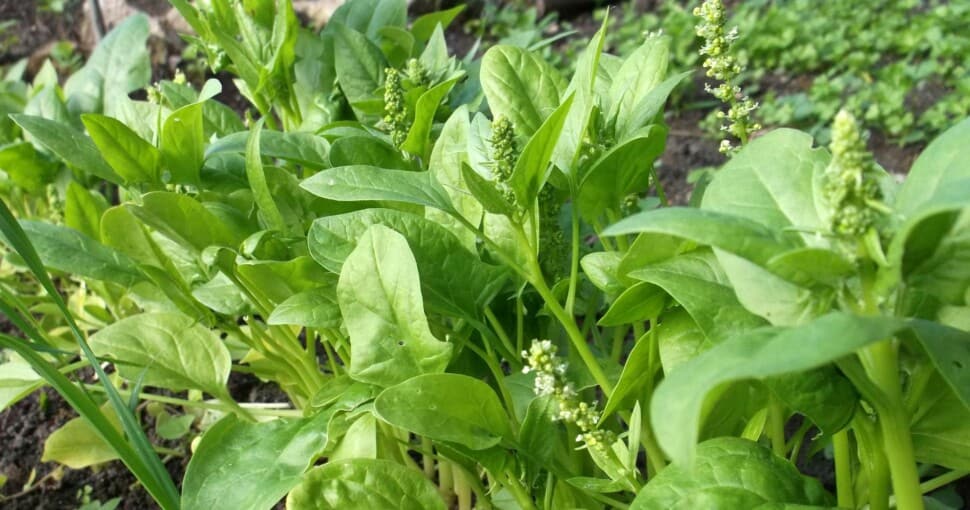What is commonly called spinach may actually be better classified as leafy greens or even edible wild greens. To complicate matters, spinach may vary quite considerably in appearance depending on the variety. Spinach (Spinacia oleracea) belongs to the Amaranthaceous plant family and is divided into three broad categories or types.
Contents
These categories are:
- Savoy spinach
- Semi-savoy spinach
- Smooth-leafed spinach
Savoy spinach varieties have leaves that are fleshy with a deep crinkled texture. The texture makes it harder to remove soil from the leaves. Semi-savoy spinach varieties are often grown by home gardeners. The leaves are less crinkled than savoy spinach, but they are not altogether smooth. Smooth-leafed spinach is usually used for processing and has smooth leaves.
Within each of these categories, there is a wide variety of cultivars. The main difference between the three types pertains to leaf texture and thickness. Some varieties are fast-growing, and others are slow growing. Each of these types has different preferences for growing conditions.
Generally fast-growing spinach varieties are planted late in winter or early in spring. Slow-growing varieties of spinach are planted late in spring and in summer.
Not all spinach leaves have the same shape, either. Spinach leaves can be tall with rounded tips, while others are small and triangle-shaped. It is no surprise that there is confusion about what spinach looks like. One thing that is not unclear, though, is that spinach is loaded with minerals, vitamins, and nutrients. What other plants look like spinach, and are they as nutritious?
Related: 8 Plants That Look Like Lettuce
1. Swiss Chard
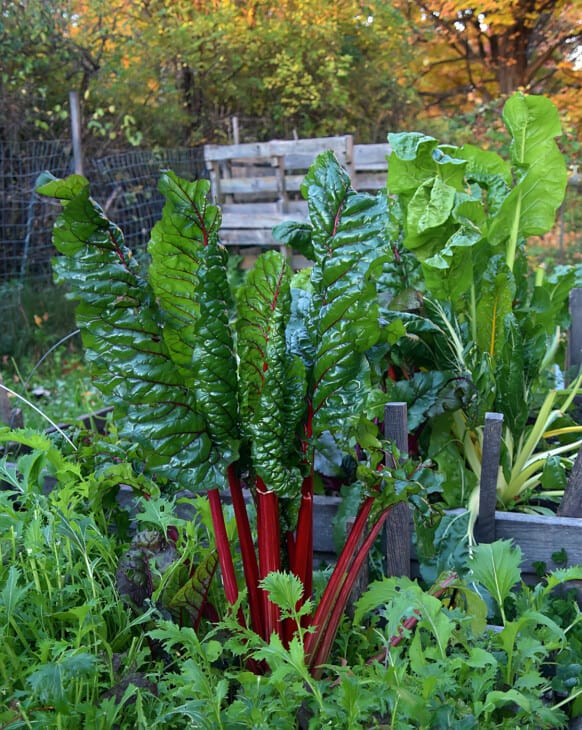
Swiss chard (Beta vulgaris) is often sold as spinach. Those in the know distinguish Swiss chard from spinach by calling it names like perpetual spinach, silver beets, beet spinach, and seakale spinach. Chard has been cultivated from the wild-growing sea beet.
Swiss chard has the crinkled appearance of savoy spinach but lacks the thick fleshy texture. Swiss chard leaves have longer leaf stems or petioles that help to distinguish them from spinach. Swiss chard varieties include types with white, yellow, orange, pink, and red ribs and stem options. The colored varieties are often referred to as rainbow chard or kaleidoscope chard.
Spinach grows as an annual or occasionally as a biennial plant. Swiss chard plants are hardy and can be harvested continually throughout the season. Healthy chard plants can grow as high as two feet tall. Chard plants are extremely cold tolerant and can grow as perennial plants giving rise to the name perpetual spinach.
2. Sorrel
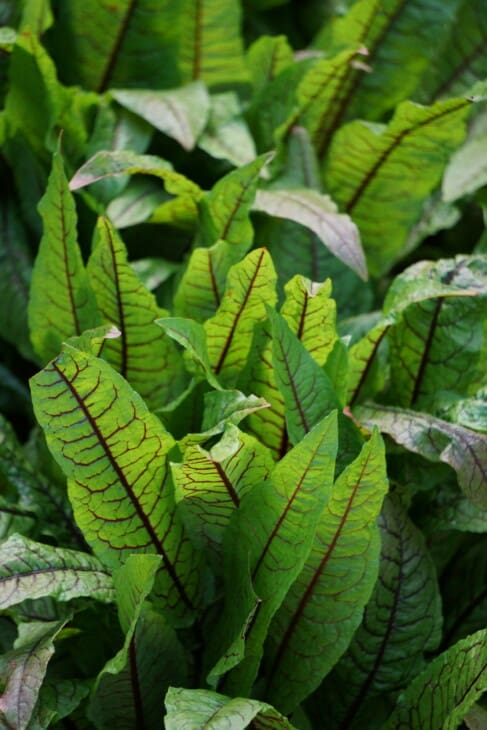
Sorrel (Rumex acetosa) is also known as common sorrel, spinach dock, sheep’s sorrel, or garden sorrel. Sorrel is native to Europe and Asia and is grown as a herb or a leafy green edible plant. Sorrel is a perennial plant that grows twenty-four inches tall in its grassland habitats and the garden. Today it is a naturalized plant in the Mediterranean, Europe, and Scandinavia.
Sorrel leaves are arrow-shaped, like smooth-leafed spinach varieties. Sorrel leaves can grow six inches long and have a long leaf stem. Sorrel leaves have a sour taste due to oxalic acid, which is present in many plants in the Rumex genus.
Sorrel is eaten the same way as spinach, used in salads raw or cooked in stews, soups, or curry dishes. Sorrel is used to make a tangy green dipping sauce. It is even dipped in a batter and fried as an appetizer.
Sheep’s sorrel also has medicinal applications. It has been used as a North American traditional medicine when combined with other herbs to make a drink called Essiac tea. This tea was widely used in the previous century as a cure for some forms of cancer.
3. New Zealand Spinach
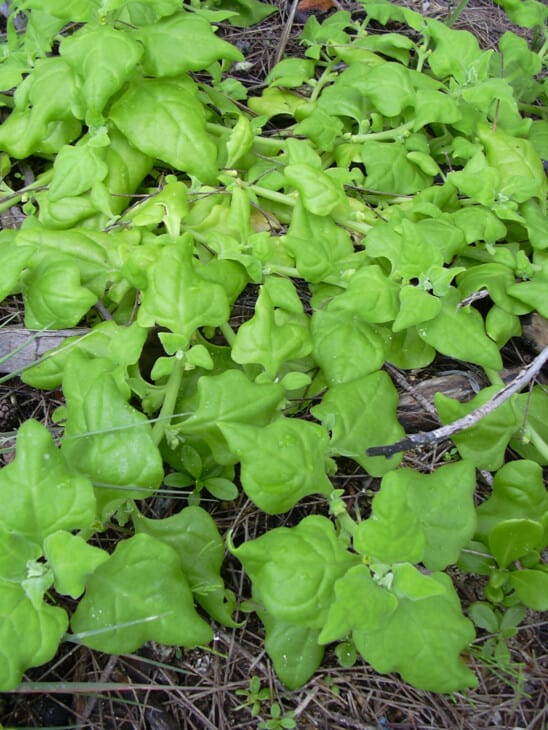
New Zealand spinach (Tetragonia tetragonioides) goes by monikers such as sea spinach, Warrigal greens, and Cook’s cabbage. This member of the Aizoaceae plant family is native to Australia, Asia, and New Zealand. New Zealand spinach has spread to the Americas, Africa, and Europe and is considered invasive in some countries.
New Zealand spinach has small leaves, like baby spinach but has thicker leaves similar to a savoy spinach variety. New Zealand spinach must be blanched in hot water and then rinsed in cold water to remove the oxalates before it is eaten.
Like spinach, New Zealand spinach also contains many vitamins and minerals. It is not only grown as a food source, though. It is also used as a decorative plant and for a ground cover in gardens, as many common garden pests do not eat it.
4. Goosefoot
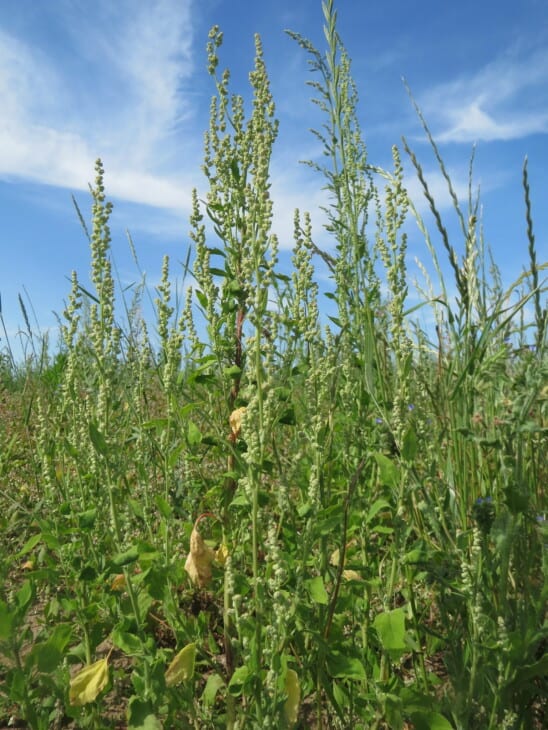
The Goosefoot plant (Chenopodium album) is also known as lamb’s quarters or pigweed and is an edible weed in the Amaranthaceae plant family. Goosefoot grows as an annual plant in most temperate regions.
Goosefoot is eaten as a spinach substitute in many countries where it is harvested in the wild. Goosefoot and many other amaranth varieties are sometimes viewed as a weed. Despite gardeners removing this plant as a weed, it is high in nutrients, and the seeds also contain large amounts of protein, Vitamins, and minerals.
The goosefoot leaves are much smaller than spinach leaves, and the plants grow significantly taller than spinach. It is not uncommon to find goosefoot plants six feet tall. While the goosefoot may pop up in the garden uninvited, it does provide a lot of food, so think twice before adding it to the compost pile.
5. Beetroot Greens
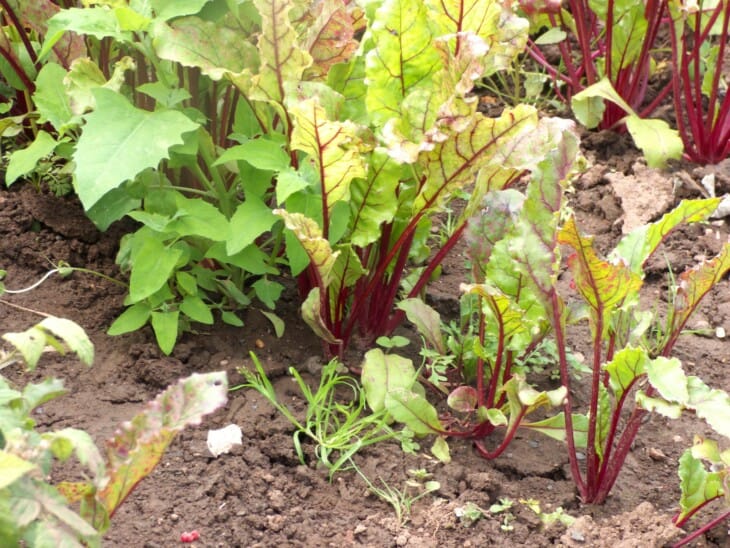
Beetroot greens (Beta vulgaris) are closely related to Swiss chard and share the sea beet as its common wild ancestor. Beetroot is most well known for the deep red root crop, but the greens are as healthy and delicious as Swiss chard and spinach.
Beetroot is usually grown as an annual crop, but in order to produce seed needs to grow as a biennial plant. Beetroot leaves are bright green with red stems and veins, which looks very similar to the red vein baby spinach variety. Beetroot greens not only provide nutrition, but they also help to detoxify the body. Beetroot really is an excellent plant as a double-yielding crop with medical benefits to boot.
Beetroot leaves are bigger than red veined spinach, but aside from that, the leaves are equally nutritious. Wild beetroot is still found in Europe, North Africa, and the Mediterranean region, but the domesticated version of beetroot crops is grown worldwide.
6. Malabar Spinach
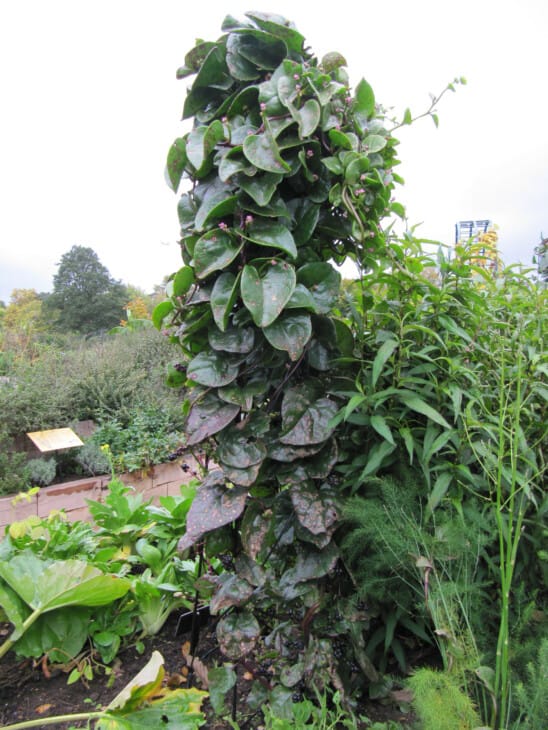
Malabar spinach (Basella alba) is also called Ceylon spinach, vine spinach, and Indian spinach. Malabar spinach is native to India, Asia, and New Guinea but has become naturalized in most tropical regions. Malabar spinach leaves are thick and fleshy like savoy spinach varieties but do not have a crinkled leaf. The leaf shape of Malabar spinach is similar to baby spinach.
Malabar spinach grows as a vine that can grow up to thirty feet long. There are two varieties of Malabar spinach. One variety has green leaves and stems, while the other has a purple stem with green leaves that show a hint of purple trim around mature leaves.
Like spinach, Malabar spinach contains a wide array of vitamins and minerals. In addition, Malabar spinach leaves contain a substance called mucilage. Mucilage benefits the body as it helps to heal mucus membranes in the body.
Malabar spinach produces berries. The berries remain green in the green stem variety, while the purple vine variety has dark purple berries. The berries are not sweet but are very high in antioxidants. The berries are often added to rice to color it purple. You can also make a nutritious drink from crushed sugar cane juice and Malabar spinach berries.

